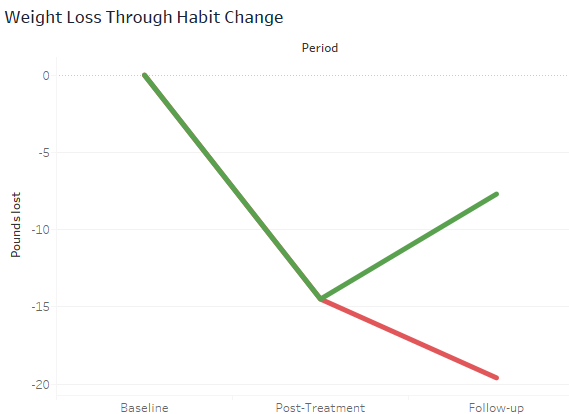Healthy Habits: Using Behavioral Science in Health Policy
Encouraging healthy behaviors is a significant policy challenge because efforts to spark conversation around a health topic often fail to translate into strategies that actually change collective health behaviors. Although campaigns might be successful at spreading information, such messages still may not inspire people to act differently. For example, when the National Cancer Institute introduced the 5 A Day for Better Health Program, public awareness that a healthy diet includes five servings of fruits and vegetables increased from 7 percent to 20 percent between 1991 and 1997. However, during this period, actual consumption of fruits and vegetables stayed constant.
A related problem is that even when programs succeed in changing health behaviors, the impact is often temporary. For example, one study found that distributing financial incentives for weight loss increased the average number of pounds lost during the period of observation. However, once the study ended, so did the behavior change. (See Figure 1.)

To overcome these problems, Wendy Wood and David T. Neal argued that the key is changing people’s habits in order to achieve meaningful and lasting change. In their recent Behavioral Science & Policy article, Wood and Neal reviewed the literature on forming and breaking habits to inform policymakers on potential strategies for long-lasting health impacts. They suggested that because people often struggle to delay gratification, a common explanation for when interventions fail to produce persistent change is that individuals lack the willpower to adopt healthy behaviors. However, the researchers found a striking pattern in efforts to change tobacco smoking behaviors that breaks this trend: The most effective interventions changed people’s habits instead of requiring constant impulse control. That is, when a behavioral modification affected a person’s involuntary activity, the new behavior was more likely to stick than when an individual vigilantly monitored a particular desire.
The researchers suggested that changing health behavior through people’s habits takes on two forms: creating new habits and breaking old ones. When creating new habits (more technically, “context-response associations”), the process must include repetition, context cues, and random rewards. Although there are not many interventions that incorporate all three parts, the researchers cited an example of a weight loss program where participants developed new routines, made changes to their environments to trigger new behaviors, and delivered immediate rewards for positive weight loss behaviors. This intervention showed persistent effects well after the treatment period. On average, the group with the habit-change treatment lost about five additional pounds three months after the treatment period, while the control group gained back about five pounds. (See Figure 2.)

When breaking old habits, the researchers outlined critical steps, including cue disruption, a change of environment, and cautious monitoring. For example, one study found that thirty-six percent of people who successfully changed a health behavior also moved to a new location. Furthermore, an intervention that provided free public transit to people who typically commuted by car only worked when the person had either changed the location of their workplace or home within the past three months. This suggests that environmental cues have a powerful influence on routine decision making.
The researchers argued that these examples are just a few among the long list of potential health interventions that can be offered to people, particularly during times of major life transitions. Through simple “nudges,” such as sending a text message to new residents of a neighborhood that make them aware of public transit options in their area, stakeholders could utilize the process of habit formation to change negative health behaviors, or prevent individuals from ever forming them. This type of intervention could also be applied in workplaces, where, for example, the Human Resources department might provide information to new hires about reduced insurance rates if employees wear a health tracker. To decrease the high cost of weight- and inactivity-related diseases, policymakers should exploit habit-based interventions instead of short-term behavior changes.
This article was written in collaboration with the Chicago Policy Review at the University of Chicago Harris School of Public Policy and was originally published on that site.
Source: Wood, Wendy, and David T. Neal. “Healthy Through Habit: Interventions for Initiating & Maintaining Health Behavior Change.” Behavioral Science & Policy 2 (2016): 71–83.
Featured photo: cc/(Duka82, photo ID: 498048538, from iStock by Getty Images)
